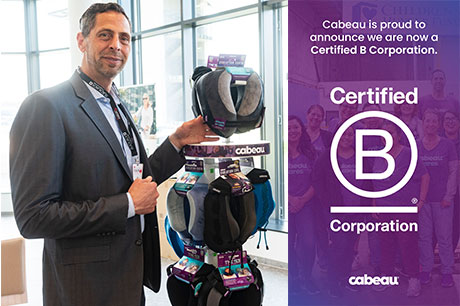ASUTIL: Dufry and WDFG talk Brazil
By Doug Newhouse |

At ASUTIL last week, José Carlos Rosa, COO, Dufry and Pedro Castro, International Operations Director, WDFG discussed new travel retail opportunities in Brazil.
José Carlos Rosa began his ‘Brazil – a new reality – presentation by looking at the macroeconomic outlook and noting that global economic activity is recovering without pressing interest rates.
Activity in the US is recovering after the crises of a’ weak year’, while the Chinese economy should stabilise after additional government stimulus. Rosa showed analyst’s estimations that recovery in the Eurozone is looking to become more robust.
At the same time, the external environment continues to benefit emerging markets, although the volatility in the market may come back with high interest rates in the USA and uncertainty in China.
By contrast, the key challenges facing the Brazilian economy are cited as demography, the labour market and the external environment.
Productivity must increase in Brazil, while the gap between supply and demand will be closed with supply expansion, the labour force qualification and infrastructure growth.
Looking at the Brazilian social classes from the total population of 201m, those in Class A earning R$7.006 ($3,142) a month or more in 2000 accounted for 5.0%, falling to 4.8% in 2010, with the expectation that this segment will rise again to 5.1% by 2020.
Those in Class B earning R$4.635 to R$7.006 ($2,075 to $3,142) accounted for 3.8% of the population in 2000, growing to 5.7% by 2010. This segment is expected to account for 7.9% by 2020.

INFLATION IS THE ENEMY OF CONSUMPTION
The number of citizens in Class C earning R$1.159 to R$4.635 ($519 to $2,075) stood at 33.3% in 2000, rising to 53.2% by 2010 and the expectation is 58.9% by 2020.
In Class D those on a monthly income of between R$701 to R$1.159 ($314 to $519) stood at 20% of the population in 2000, falling to 17.9% by 2010 – plus an expectation of a further fall to 16.3% in 2020.
Finally, those people banded in Class E earning less than R$701 ($314) a month accounted for 37.9% of the population in 2000, falling dramatically to 18.4% by 2010 and are expected to fall again to 11.9% by 2020.
Interestingly, Dufry’s data chart shows that inflation erodes the new middle class, with rising prices reducing by R$73bn ($32.7bn) the consumption of Brazilians that have risen in the social pyramid.
After the initial euphoria of rising wages, Brazilian consumption patterns have now settled into a more selective pattern. Consultants also note that spending is generally higher among parents with small children and younger people.

Dufry’s before and after numbers, including the extra space it is – or will be – operating in Brazil.
IMPORTANCE OF AIRLINE MERGERS
The next stage of Rosa’s presentation focused on the all-important airline mergers that have had a significant impact in Brazil. He listed them as follows:
• Azul and Trip: After announcing a merger in 2012, Azul and Trip now have 14.2% of domestic airline market participation.
• Gol and Webjet: In 2011, Gol acquired a 100% stake in Webjet for R$96m ($42.9m) and in 2012 Webjet ceased to exist.
• Tam and Lan: Announced in 2010 and approved in 2012, the merger between TAM and LAN positioned the new company among the 10 largest airlines in the world. The company recently switched from the Star Alliance to One World.
• United and Continental: In May 2010, United Airlines and Continental announced a merger agreement. Valued at US$3bn, the deal created the largest airline in the world.
• British Airways and Iberia: The European Commission gave the green light in 2010 for the merger of Iberia and British Airways, creating the third largest airline in Europe.
Rosa said that all these major mergers are significant, since Brazil is a huge continent in itself and the country relies on aircraft. He says that these mergers will also lead to new services and one example is Azul, which is currently awaiting authorisation to begin offering route services outside of Brazil.
STATE AIRPORTS SELL-OFF
Of course, another major change is how airports are managed in Brazil since the old days when state-owned Infraero group owned and managed all of them. The fact that there was not enough investment in these facilities led to central government handing over ‘the big change airports’ to the private sector, while Infraero retains 49% shares in all of them.
To date, the five key airports that have been privatised have generated R$45.3bn ($20.2bn) for the government, which in turn has awarded operating rights to the acquiring and developing companies and consortiums spanning a total of 130 years. These airports, the winning consortiums, prices they paid and the concession periods awarded are listed below:
• São Paulo Guarulhos was acquired by Invepar (90%) and Airport Company South Africa (10%) for R$16.2bn ($7.2bn) to win the 20-year contract.
• Viracopos-Campinas was acquired by UTC Participações (45%) Triunfo Participações (45%) and Egis Airport Operation (10%) for R$3.8bn ($1.7bn) to win the 30-year contract.
• Brasilia was acquired by Infravix Participações SA (part of the Engevix Group (50%) and Corporation America/ARG (50%) for R$4.5bn ($2bn) to operate a 25-year contract.
• Rio de Janeiro Galeão was acquired by Odebrecht Transport Aeroportos (60%) and Changi Airport Group (40%) for R$19bn ($8.5bn) to run the concession for 25 years.
• Confins Airport, Belo Horizonte was acquired by CPC (75%) and Zürich Airport International (24%) and Münich Airport International (1%) for R$1.82bn ($815,797) for a period of 30 years.

Dufry at São Paulo Guarulhos International Airport two years ago.
PRIVATISATION HAS RAISED THE STAKES
Rosa says that what these consortia paid – making direct reference to the high amounts – is obviously important and he says there is obviously a big financial knock on impact on Dufry as the major retailer at all of these airports.
He adds that the retailer faces numerous and continuous challenges in Brazil and is constantly preparing for and anticipating changes. ‘In Brazil, each solution has a problem….’ he says, with his dry sense of humour.
Until 2010, Brazil was performing better than the world average GDP, although he says it is important that inflation does not run away from the slight increase that is expected and that nominal interest rates remain.
Emerging markets have to be careful not to slip into volatility, he adds and especially considering the progress where so many Brazilians have emerged from being poor to relatively well off and even made into the so-called middle class and above ‘tiers’ in recent years.
Rosa says the results of internal discussions on what these new customers/passengers actually want to buy have concluded that more quality products are the answer. As he said: “When I arrived in Brazil I learned that the carnival became a luxury carnival.”
He said the previous euphoria within Brazil’s economy has now given way to a more cautious approach to purchasing. Brazilians and the banks are more careful about how they manage their money.
Meanwhile, Dufry and the rest of Brazil are also hoping that the World Cup football tournament taking place now may put a welcome end to the five-year stagnant foreign tourist inflow from the current annual 5m intake to 7.4m by the end of 2014 – and even 8.9m by 2018. After all, Rosa says that 500,000 foreigners have bought tickets for the event.
FOOTBALL AND TOURISM…
Interestingly he points out that US citizens bought the most tickets and Canadians are also right up there and logically he reasons that this clearly shows that travellers are not just coming for the football, considering neither the US or Canada are hardcore soccer fans.
These and many other visitors are taking the opportunity to combine holidays and soccer matches during their visits and the trick will be to turn them into airport shop customers, says Rosa.


All the twin border towns in Brazil (column on the right) along with those in Uruguay (UY), Argentina (AR), Paraguay (PY); and Bolivia (BO) on the left.
But putting this aside, there is also the big opportunity that also lies ahead with the establishment of border shops. Law 12.723 was approved by Brazil’s Congress in October 2012 and has been duly signed off by President Dilma Rouseff, so permitting duty free shops in Brazilian border twin cities.
According to Rosa this border consists of a 150 kilometre-wide belt along the 15,719km of Brazilian border line. This comprises some 10m people in 588 municipalities and 11 states.
However, the devil is going to be in the detail with these new operations in future, since there are still key decision to be made about the trading terms on which they will be allowed to operate.
Rosa explained: “We know that the legislation has been passed, but we still don’t know who is going to be allowed to buy at these shops and how many shops will be allowed in each city.

Rio de Janeiro Airport – Brazil’s second largest.
DUFRY NOW HAS MUCH MORE SPACE
“None of this is well defined today and ASUTIL is working on this and is an important player. We have had our first meeting in Rivera, but right now a lot of decisions have to be made”.
Back with its airport stores, Rosa says Dufry has obviously signed its duty free and duty paid contracts now and he believes this is a new stage in airport retailing, with many more people now willing and able to relate directly to the airports and their shops.
He also underlined the much misunderstood and underestimated importance of having been able to secure the retail square footage in some locations that Dufry has only been able to dream about until now. Similarly, relocating stores to better ground floor locations is also seen as crucial.
All of which promises a very positive future provided Dufry can maintain growth in these privatised airports and continue to develop its store concepts, such as food, news and other retailing, besides its core duty free business.
Rosa concluded: “So after 40 years in Brazil we are going back to school to learn how to run the business.”

Pedro Castro, International Operations Director, WDFG.
WDFG HIGHLIGHTS BELEM
This ‘new market challenge’ was also a timely theme taken on by the next speaker, Pedro Castro, International Operations Director at WDFG. He told the very attentive ASUTIL audience that Brazil is obviously a whole new reality for WDFG.
Having said that he also pointed to the company’s multiple credentials in the region, which include Lima Airport in Peru where the retailer celebrates 20 years’ operations next year. [Other WDFG LATAM locations include Santiago de Chile and Mexico].
The ever popular and respected Castro fully acknowledged that WDFG is the new boy on the block in Brazil, having signed its contract to operate at Bélem Airport in 2012. He said Brazilian customers account for around 2% of WDFG’s total sales at present, but still remain important.
According to the retailer’s presentation, WDFG’s ‘Brazilian sales by family’ break down as follows, beauty 55%; liquor 15%; luxury 14%; food 12%; souvenirs 2%; and tobacco 2%.


Top: Bélem Airport in Brazil where (above) WDFG’s staff talked on film about the operation.
Bélem Airport handled 3.5m passengers last year, but has the capacity to handle more and is already the fourteenth largest airport in Brazil, where it trades as Aldeasa.
Castro also talked about the solid credentials of WDFG that back its small business in Bélem and introduced a short video where staff at the shop introduced the business in general terms to the audience.
[WDFG opened its two new stores in Bélem international airport in Brazil in the last quarter of 2013, having worked closely with both Customs and the airport, to develop the duty free legislation in the state of Estado do Pará-Ed].
JEDCO launches multi-category tenders at KAIA T1
Jeddah Airports Company (JEDCO KSA) has issued a request for proposals for several...
Alcohol insights: Conversion up, spend down in Q4
Conversion of visitors in the alcohol category in duty free has risen to 54% in Q4 2023,...
Heinemann Asia Pacific makes breakthrough in New Zealand at AKL
Heinemann Asia Pacific is set to enter the New Zealand market with three new retail concepts at...
-
 The Americas,
The Americas,JEDCO launches multi-category tenders at KAIA T1
-
 The Americas,
The Americas,Alcohol insights: Conversion up, spend down in Q4
-


In the Magazine
TRBusiness Magazine is free to access. Read the latest issue now.

 Trbusiness. The travel retail Trbusiness. The magazine for global retail and duty free professionals.
Trbusiness. The travel retail Trbusiness. The magazine for global retail and duty free professionals.





















